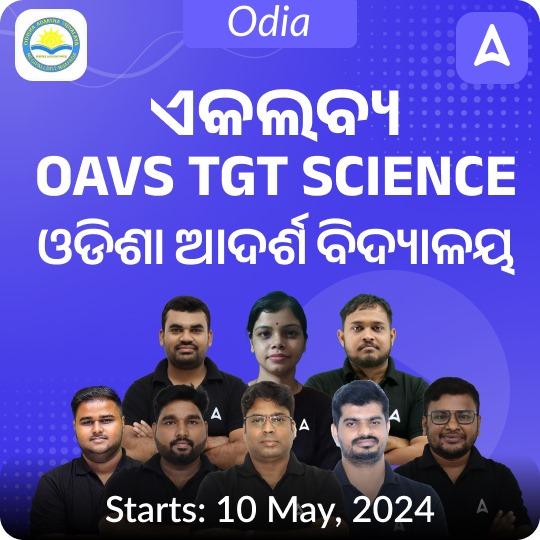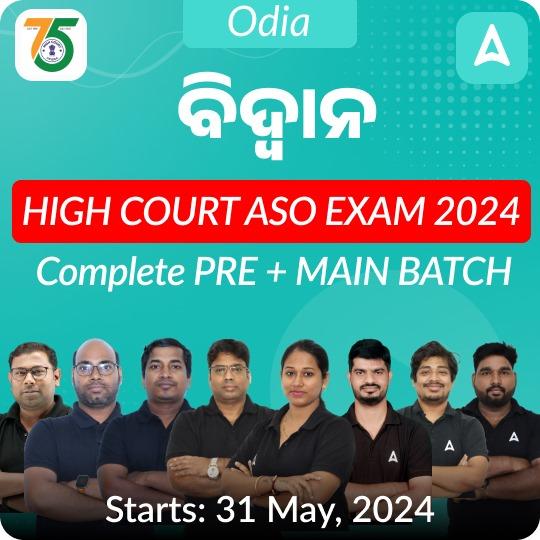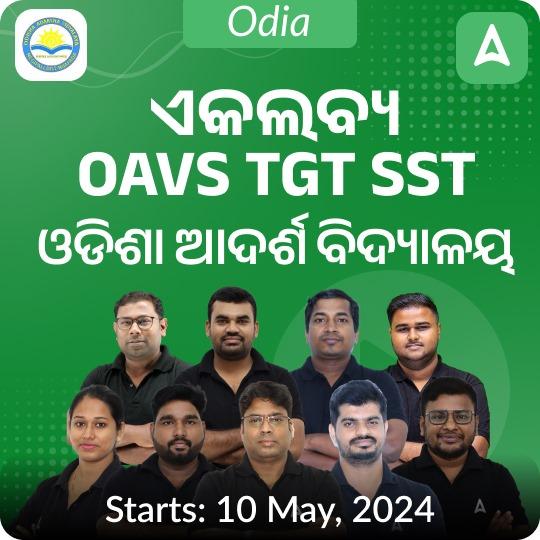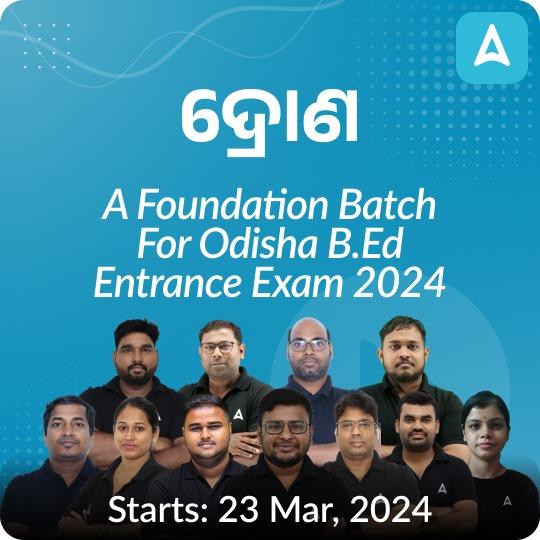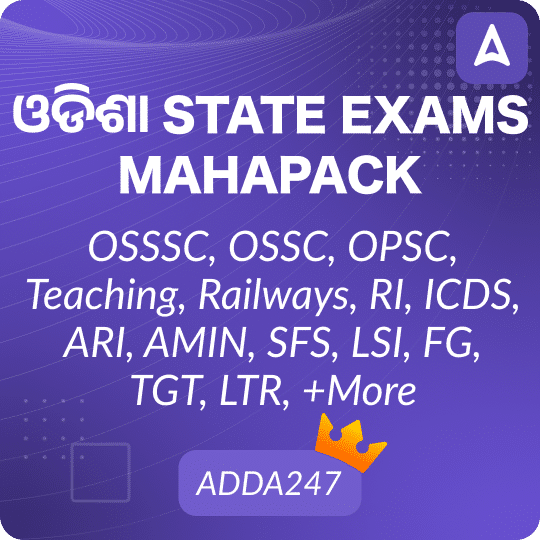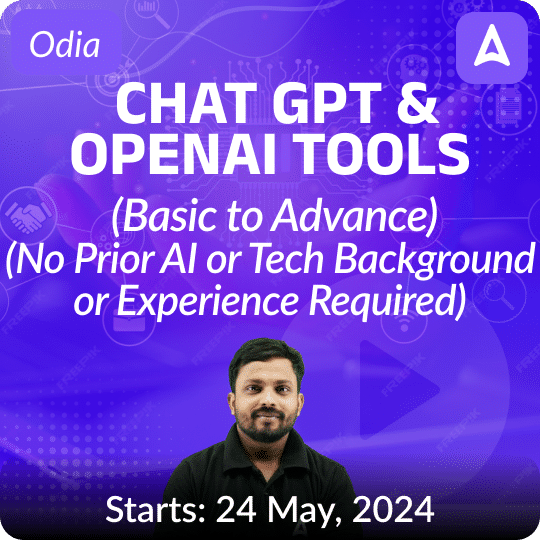As you are aware, in all competitive exams, the “Daily Current Affairs Section” holds significant importance in determining the cutoff scores. Therefore, if you excel in this section, you will have a better chance of achieving higher marks in these exams and securing a spot on the merit list.
Addapedia Odisha – Daily Current Affairs -13 November 2024
13 November 2024
National and International News
| Inflation |
Why in news?
- Food prices drive retail inflation to 6.2% in October.
Key Points:
-
- It refers to a steady rise in the prices of various goods and services in the economy.
- It is measured on a year-on-year basis.
- It is usually expressed as a rate as follows:
- Rate of Inflation = (Price in this Period – Price in the Previous Period) X 100/Price in the Previous Period
- In India, inflation is mainly measured through 2 price indices – the Wholesale Price Index (WPI) and the Consumer Price Index (CPI).
- Another measure of inflation frequently used across the world is – GDP Deflator.
|
| Carbon Trading |
Why in news?
- Countries gathered in Baku for the annual climate conference, COP29, to approve a long-awaited agreement to finalize a global carbon market.
- This market will enable countries to trade carbon credits—certified reductions in carbon emissions—with one another. The price of these credits will be determined by the emission limits set by individual countries.
Key Points:
- Carbon trading is the process of buying and selling permits and credits that allow the permit holder to emit carbon dioxide.
- It is a market-based system aimed at reducing greenhouse gasses that contribute to global warming, particularly carbon dioxide emitted by burning fossil fuels.
- An emissions trading scheme (cap-and-trade system) sets a regulatory ceiling or ‘cap’ on greenhouse gas emissions being regulated under the scheme.
- The right to emit a tonne of CO2 is often referred to as a carbon ‘credit’ or carbon ‘allowance’.
- There are broadly two types of carbon markets: compliance and voluntary.
- Examples – European Union’s Emissions Trading System(ETS)
- The Clean Development Mechanism (CDM), adopted under the Kyoto Protocol in 1997.
- Emission-reduction projects in developing countries have generated carbon credits used by industrialized countries to meet part of their emission reduction targets.
|
| India’s Renewable Energy Sector |
Why in news?
- The Ministry of New and Renewable Energy (MNRE) has published new data showing significant growth in India’s renewable energy sector between October 2023 and October 2024.
- This progress highlights India’s dedication to meeting its clean energy objectives in alignment with the ‘Panchamrit’ goals.
Key Points:
- India’s installed non-fossil fuel capacity has increased 396%in the last 8.5 years and stands at more than 207.76 GW (including large hydro and nuclear), which is about 46% of the country’s total capacity.
- The country has set an enhanced target at the UNFCCC’s COP26 (Glasgow, 2021) of 500 GW of non-fossil fuel-based energy by 2030 – the world’s largest expansion plan in renewable energy under the Panchamrit pledge.
- As per REN21 Renewables 2024 Global Status Report, India stands 4th globally in RE installed capacity (including large hydro), 4th in Wind Power capacity and 5th in Solar Power capacity.
- The Panchamrit goals are India’s five key climate action plan points:
- Non-fossil fuel energy capacity: Achieve a non-fossil fuel energy capacity of 500 gigawatts (GW) by 2030
- Renewable energy: Meet at least half of India’s energy requirements from renewable energy by 2030
- Carbon emissions: Reduce carbon dioxide (CO2) emissions by 1 billion tons by 2030
- Carbon intensity: Reduce the carbon intensity of India’s economy by 45% by 2030, based on 2005 levels
- Net-zero emissions: Achieve the goal of net zero carbon emissions by 2070
|
| NISAR Mission |
Why in news?
- The new NASA-ISRO satellite, ‘NISAR,’ is set to transform Earth monitoring and enhance disaster preparedness.
Key Points:
-
- NISAR (NASA-ISRO Synthetic Aperture Radar) is a groundbreaking joint mission between NASA and ISRO.
- This collaborative effort aims to measure Earth’s dynamic surfaces, changing ecosystems, and ice masses.
- NISAR will provide crucial information about biomass, natural hazards, sea level rise, and groundwater.
- Its objectives are to study surface changes, monitor natural hazards, analyze climate patterns, and enhance our understanding of Earth’s dynamic ecosystems from space, surveying the planet’s land and ice every 12 days over its three-year mission life.
- The satellite will observe movements from earthquakes, ice sheet movements, landslides and volcanic activity, track changes in forests, wetlands and farmland and even check infrastructure stability.
- Significance of NISAR Mission:
-
- Earth observation and monitoring: NISAR will regularly monitor Earth’s ecosystems, surface dynamics, and ice masses every 6 days for 3 years, providing critical data on biomass, natural hazards, sea level rise, and groundwater.
- Technological advancements: NISAR is the first satellite mission to utilize dual-band synthetic aperture radar (L-band and S-band), enabling high-resolution imaging and precise surface change measurements in all weather conditions.
- Revolutionizing Earth Science: NISAR’s radar imagery will enable comprehensive monitoring and analysis of land surface changes, resource management, hazard preparedness, and ongoing crises across local and regional scales.
- International collaboration: NASA and ISRO’s partnership on NISAR emphasizes international cooperation in space exploration and scientific research.
|
| Foreign Contribution Regulation Act (FCRA) |
Why in news?
- The Union Home Ministry has cited 17 reasons for denying or revoking the Foreign Contribution (Regulation) Act (FCRA) registration of a non-governmental organization (NGO), including the diversion of foreign funds for anti-development activities, inciting harmful protests, and promoting religious conversions.
Key Points:
- It is a law enacted by Parliament to regulate foreign contributions (especially monetary donations) provided by certain individuals or associations to NGOs and others within India.
- The Act, in its consolidating form, was originally passed in 1976 and majorly modified in 2010.
- The Act aims to prevent foreign organizations from influencing electoral politics, social, political, economic, or religious discussions in India for wrong purposes and activities detrimental to the public interest.
- The Act falls under the purview of the Ministry of Home Affairs (MHA).
- ‘Foreign Contribution’ means the donation, delivery or transfer made by any foreign source of any:
- article (not being an article given to a person as a gift for his/her personal use, the market value of which is not more than one lakh rupees);
- currency (whether Indian or foreign);
- security.
- Contributions made by a citizen of India living in another country (e.g. a Non-Resident Indian (NRI)) from his/her personal savings through the normal banking channels, will not be treated as foreign contributions.
- The foreign contribution received has to be utilized only for the purpose for which it has been received, and not more than 20% of the foreign contribution received in a financial year can be utilized to defray administrative expenses.
- The FCRA requires every person or NGO seeking to receive foreign donations to open a bank account for the receipt of foreign funds in the State Bank of India, Delhi.
|
Odisha Specific News
| RERA projects |
Context:
- The Odisha government has taken steps to streamline the registration of common areas in apartments and to establish modalities for the registration of pre-RERA projects.
- This move is intended to safeguard the interests of homebuyers as per the norms of the Real Estate (Regulation and Development) Act 2016 and the Odisha Apartment (Ownership and Management) Act 2023.
About:
- RERA (Real Estate Regulatory Authority) is a regulatory body established to protect the interests of homebuyers and ensure transparency in the real estate sector.
- RERA-registered projects are those that have been approved and monitored by the respective state RERA authorities.
Key features of RERA projects:
- Mandatory registration: All real estate projects must be registered with RERA before launching sales.
- Transparent information: RERA mandates developers to disclose project details like timelines, area, pricing, approvals, etc.
- Escrow account: A portion of the project funds must be deposited in an escrow account to ensure timely completion.
- Consumer redressal forum: RERA provides a platform for homebuyers to file complaints against developers for delays or non-compliance.
- Penalty for non-compliance: Developers face penalties for non-adherence to RERA rules and regulations.
|
| NEP-2020 |
Context:
- Odisha CM has given the green light for the implementation of the National Education Policy (NEP) 2020 in the state’s higher education sector, starting from the current academic year (2024-25).
About:
- The National Education Policy (NEP) 2020 is a comprehensive framework designed to revolutionize India’s education system.
- Its focus on holistic development, increased access, and quality education promises to usher in significant positive changes.
Key goals of NEP 2020 include:
- Access and Equity: Ensuring quality education for all, regardless of socioeconomic background.
- Holistic Development: Focusing on overall development of students, including cognitive, social, and emotional skills.
- Flexibility: Offering multiple pathways for learning, including vocational education and skill development.
- Research and Innovation: Promoting research and innovation to address national challenges.
- Governance: Improving governance and accountability in the education sector
|
| Indian Navy Day |
Context:
- President Droupadi Murmu is scheduled to visit Odisha on December 4 to take part in the Indian Navy Day event as chief guest in Puri.
- The Indian Navy is set to showcase its impressive maritime capabilities and operational strength on December 4 at the Blue Flag Beach in Puri, coinciding with Navy Day.
About:
- Indian Navy Day is celebrated on December 4th each year to commemorate the Indian Navy’s role in Operation Trident during the 1971 Indo-Pakistan War.
- This operation, launched on December 4th, 1971, involved a successful attack on Karachi harbor by the Indian Navy, showcasing their capabilities and strategic prowess.
- The day honors the bravery and sacrifices of Indian naval personnel and recognizes their significant contribution to the nation’s security.
|
| Digital India Bhashini Division (DIBD) |
Context:
- The state government has collaborated with Digital India Bhashini Division (DIBD) of the Ministry of Electronics and Information Technology to facilitate growth of language technology and generative AI solutions to promote governance in vernacular language.
Key Points:
- It will enable governance and service delivery in local language by facilitating multilingual access to state government services using DIBD’s language translation application integration through ‘Bhashini Udyat’ (API’s, reference applications).
- The state is developing an AI-based language translation system that will be able to translate between Odia, Hindi, English, and Oriya.
- It will also constitute a state language mission/nodal organization for monitoring the outcome.
- The agreement was signed by OCAC CEO and DIDB CEO Amitabh Nag.
|
| Copyright © by Adda247
All rights are reserved. No part of this document may be reproduced, stored in a retrieval system or transmitted in any form or by any means, electronic, mechanical, photocopying, recording or otherwise, without prior permission of Adda247. |




